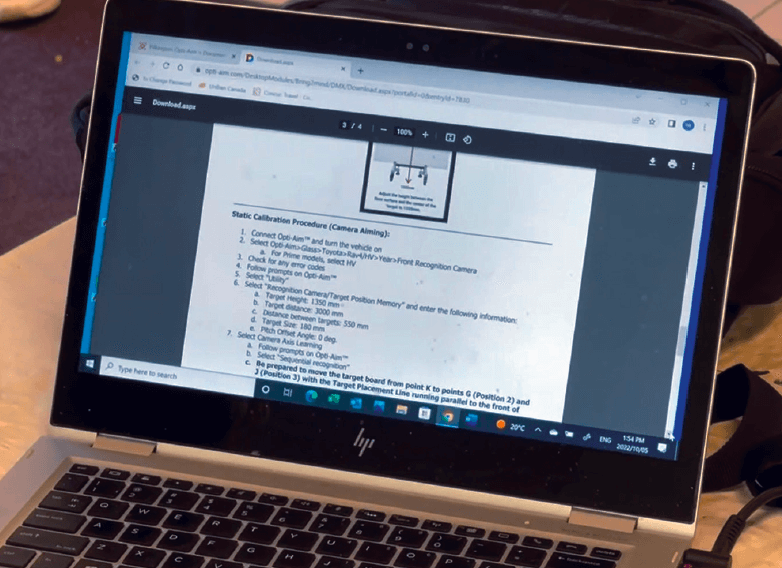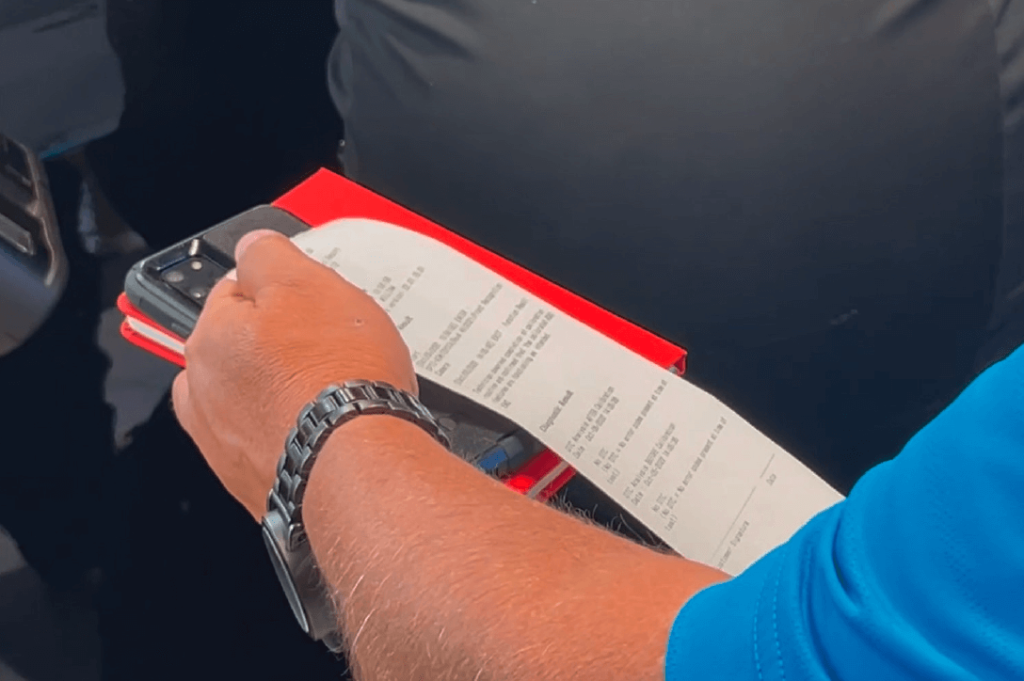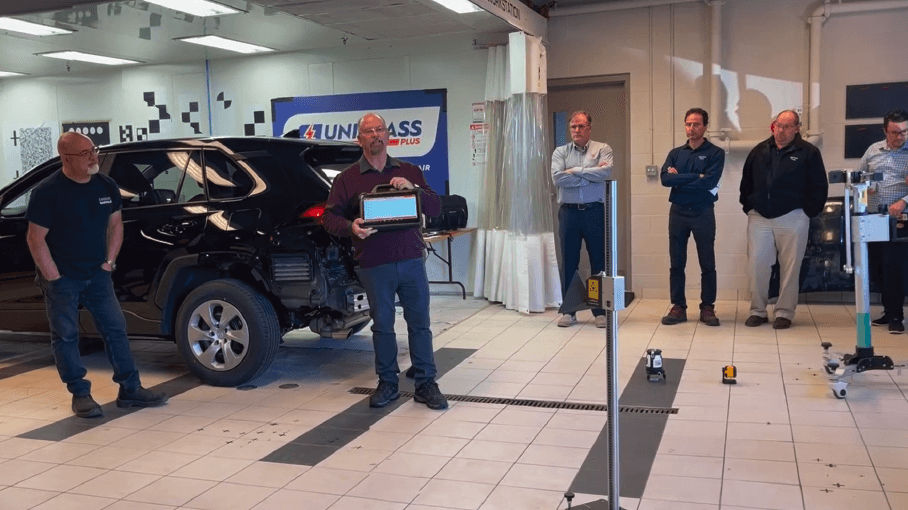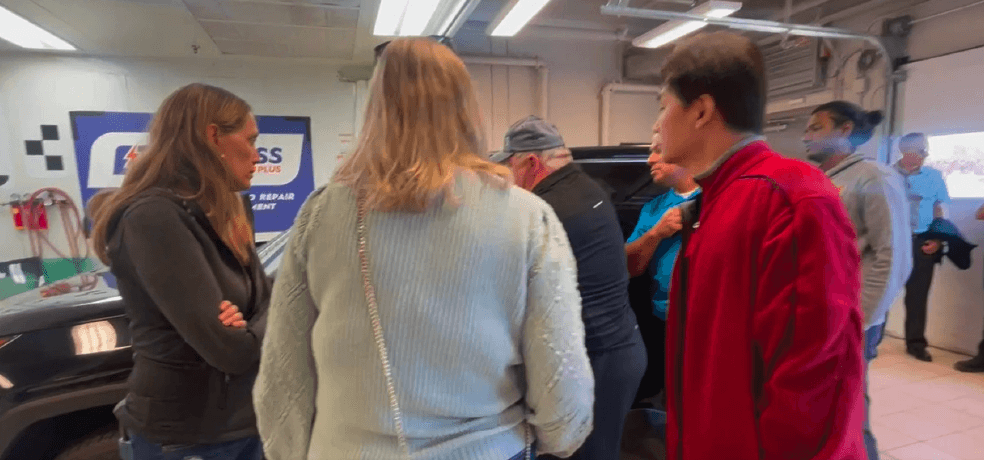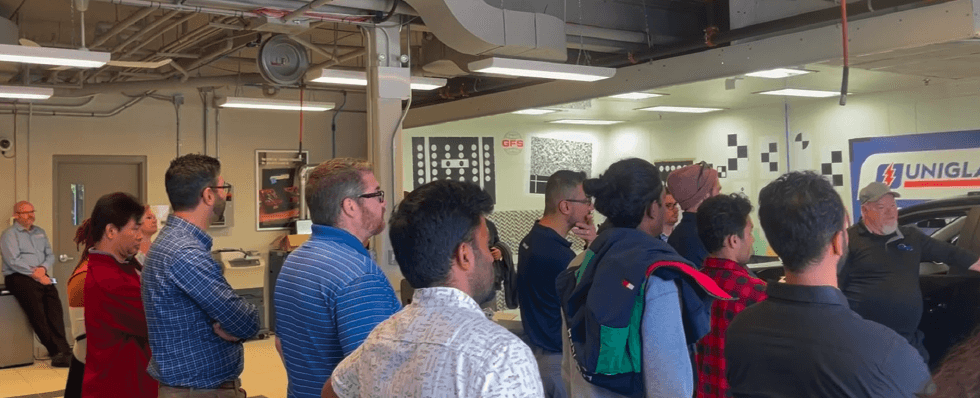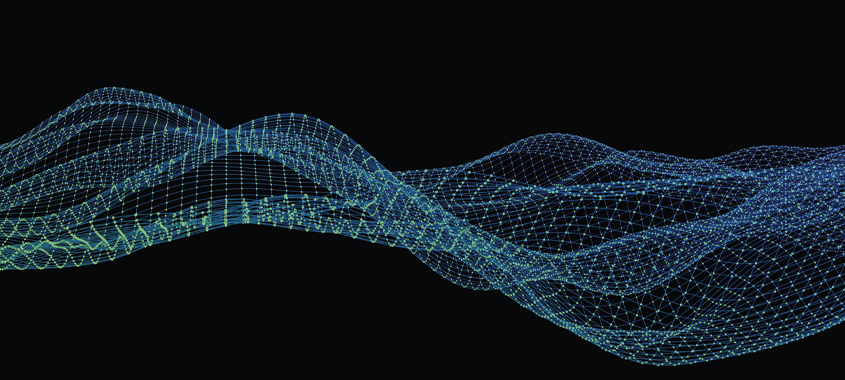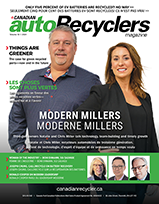DRIVEN BRANDS SEEKS TO INFORM INDUSTRY OF ADAS REQUIREMENTS
Story, photos by Allison Rogers
In early October, Driven Brands’ hosted an ADAS calibration and training event at its Canadian headquarters in Hamilton, Ontario, where Bill Davidge, CARSTAR’s director of innovation and technology, and Willy Williams, Uniban’s technical trainer, delivered an in-depth presentation and demonstration.
Attendees included collision repair facility owners, staff, and insurers representing various companies. About 70 industry professionals were in attendance—Driven Brands was actually forced to move the event to a larger venue due to industry interest.
The morning started with presentations from Davidge, Williams and the Repairify team before the crew moved across the street for a demonstration.
Attendees explored various Launch Tech targets while Lorenzo Pellicciotta of CARSTAR Oakville and Dave Marion of Launch Tech showed attendees how to complete two types of ADAS calibrations.
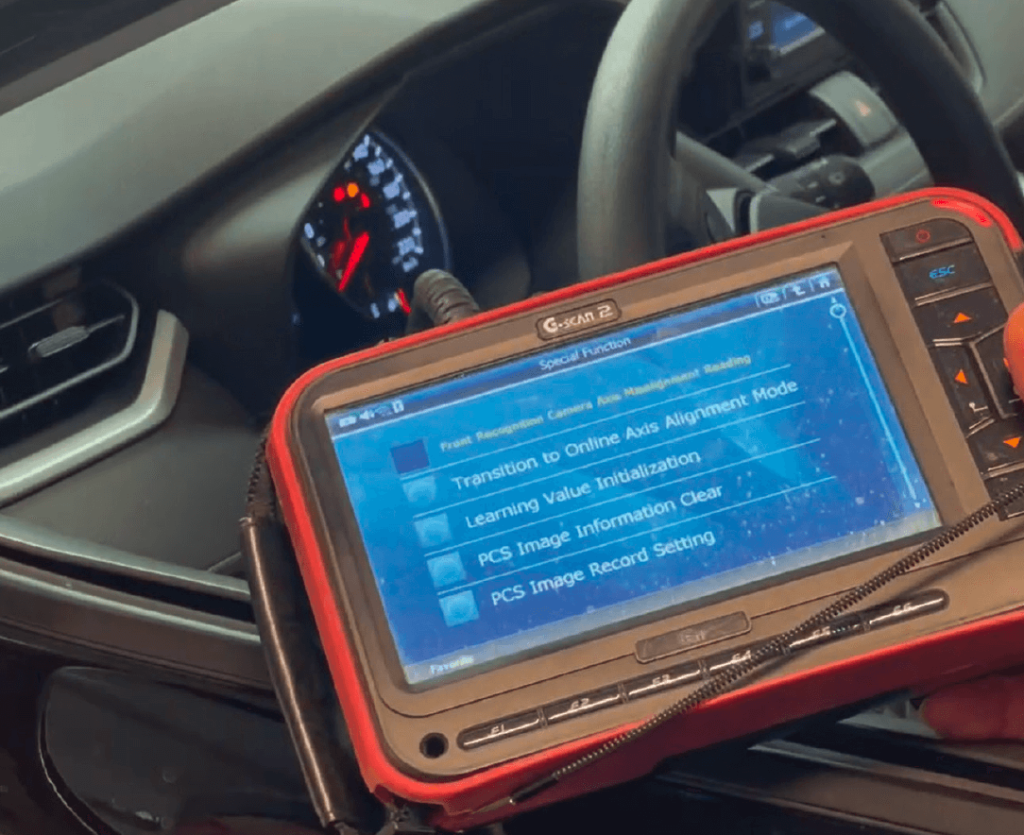
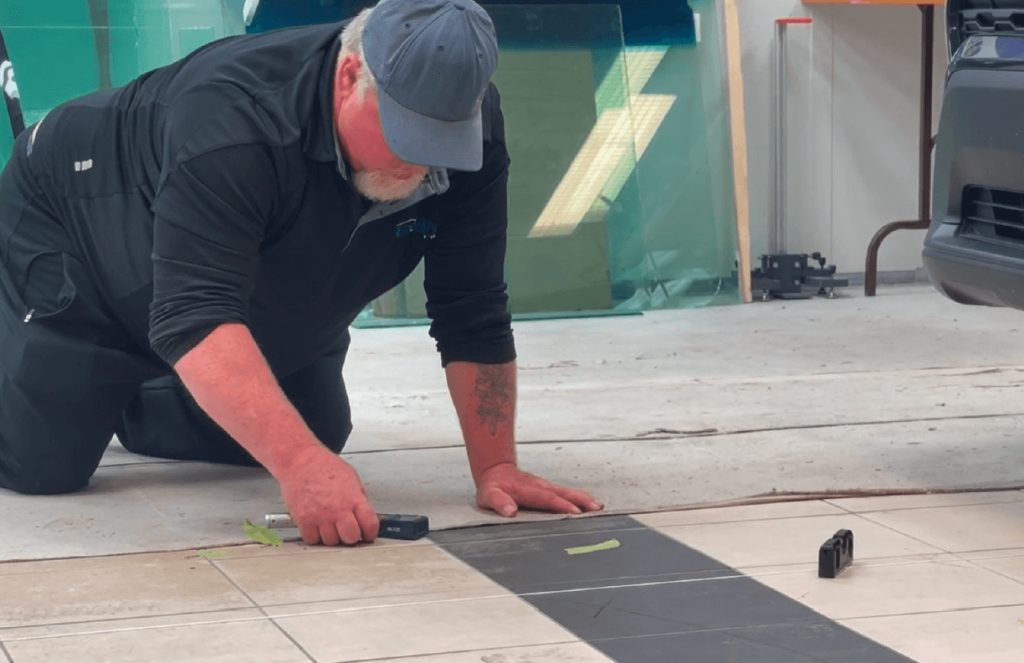
Marion first demonstrated a failed calibration, blocking the path between the vehicle and the target, to show the audience the error message that appeared on his tablet. Pellicciotta had also placed washers behind the sensor to prompt a calibration failure.
When the washers were removed and the path was clear, Marion demonstrated how quickly a proper calibration was completed. Williams then set up a glass calibration, marking targets on the floor and measuring precisely, down to the millimetre, with lasers. There is also the string method—while not as reliably precise as lasers—that some use to verify their work using a taut straight line. Williams also stressed the importance of checking OEM instructions between each step to ensure proper calibration, to OEM standards, is completed.
Documentation was another point stressed. A critical step when performing ADAS calibrations, as it can be used to confirm a proper calibration was completed on the collision centre’s part.
A full report is printed when the calibration is complete; there are also functionalities on several tools that allow collision centres to send reports directly to their records, or confirmation to the customer. There were plenty of questions following the session—primarily on the topic of access to information.
Davidge was the first to admit that the industry is far behind where it should be in terms of ADAS calibrations, and much of that problem comes from a lack of access to information.
All in all, attendees left the session armed with more ADAS information than they arrived with—though plenty of work needs to be done to address the knowledge gaps.
